The regulator dial is one of those niche styles in the wristwatch world. It never really had a “moment” but it’s been around for quite a while, and many watch brands have, over the years, added at least one to their portfolios in the interests of broadening their appeal. However, none have embraced the regulator style more than Chronoswiss, the boutique brand founded by German watchmaker Gerd-Rüdiger Lang in Munich in 1983 and currently owned and operated by Swiss entrepreneurs Oliver and Eva Ebstein. Now relocated to Lucerne, Switzerland, Chronoswiss, which had perhaps grown a bit too large and too diverse in its offerings in the several years prior, has put a renewed emphasis on the style that it introduced to the watch world when it launched its regulator-dial wristwatch in 1988.
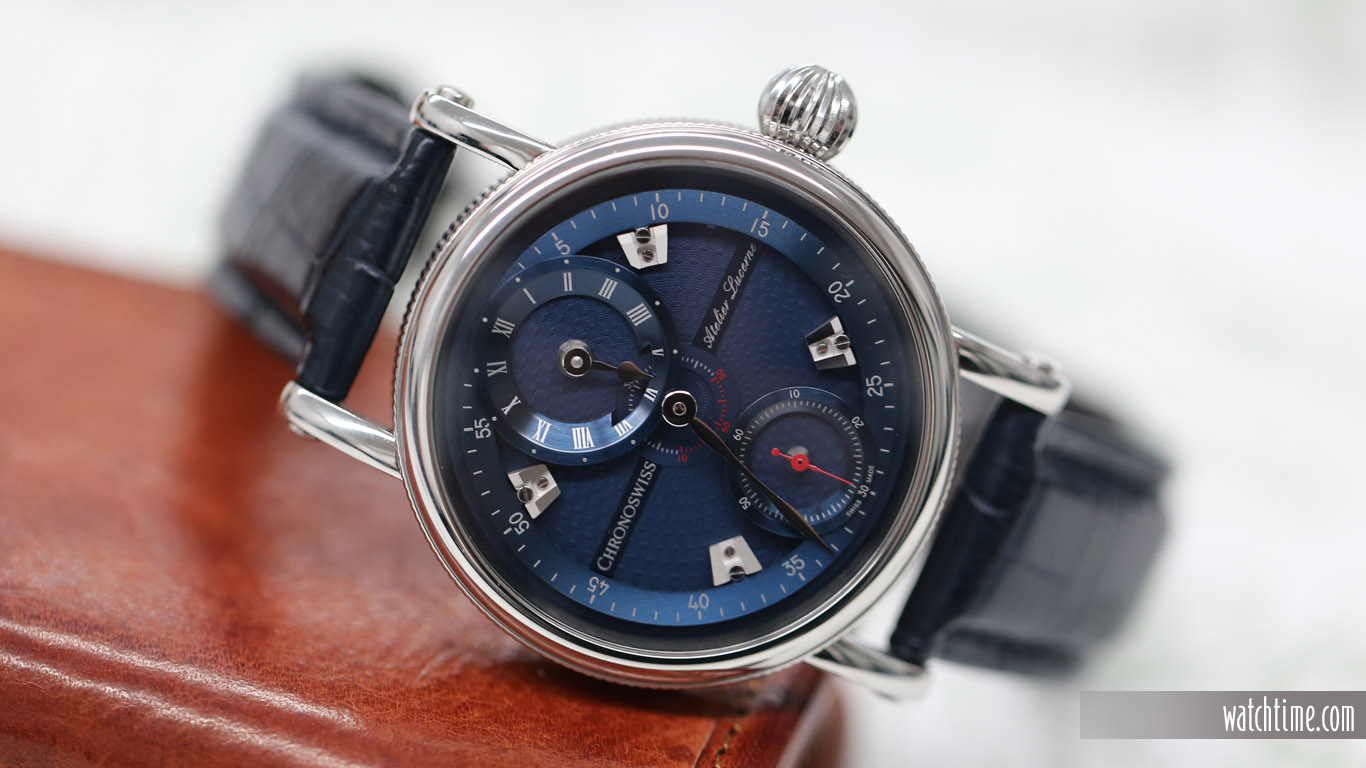
To many, the regulator is at the very least an acquired taste, like caviar, maduro cigars, or Islay Scotch whisky; those encountering one for the first time tend to find it difficult to approach, perhaps a bit confused at first as to how to read the time on that one large central hand and two stacked subdials. As someone who loves all three of those aforementioned treats, however, perhaps I was destined to take to the regulator almost immediately. A favorite piece in my own modest collection is a regulator (not one from Chronoswiss… yet) that I trot out for many formal events calling for a dress watch — that is, when I don’t currently have a loaner watch on my wrist for reviewing purposes. Which brings us to the Chronoswiss Sirius Flying Grand Regulator, and the specific model I had the opportunity to wear, with its attractive, deep blue guilloché dial and 44-mm stainless steel case.
To start with the case, which Chronoswiss says is comprised of 21 separate parts, you’ll notice the elegantly thin, rounded, polished bezel, with a suitably subtle coin edge motif. The coin-edge pattern, slightly wider, is repeated, around the edge of the screw-down caseback, with a brushed case middle in between. The coin edge is a throwback to classical watches of the past, and earlier Chronoswiss watches used it much more liberally, often on the entire case body, a look that I do sometimes miss. Another element of vintage watches that defines Chronoswiss as a brand: the large, fluted onion crown, which is very easy to grasp and turn, and perfectly sized in proportion to the case. The case middle flows elegantly into the long, curving lugs that attach to the dial-matching dark blue strap with small screws.
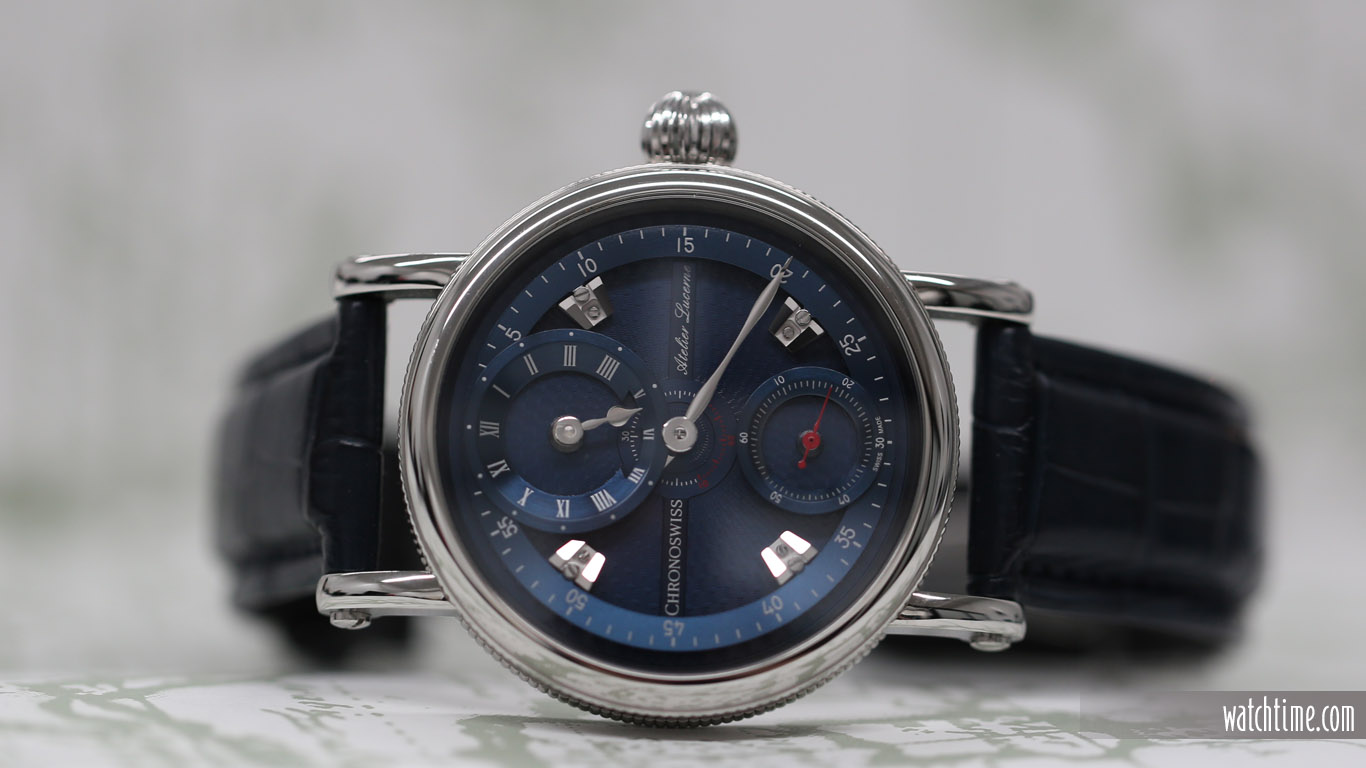
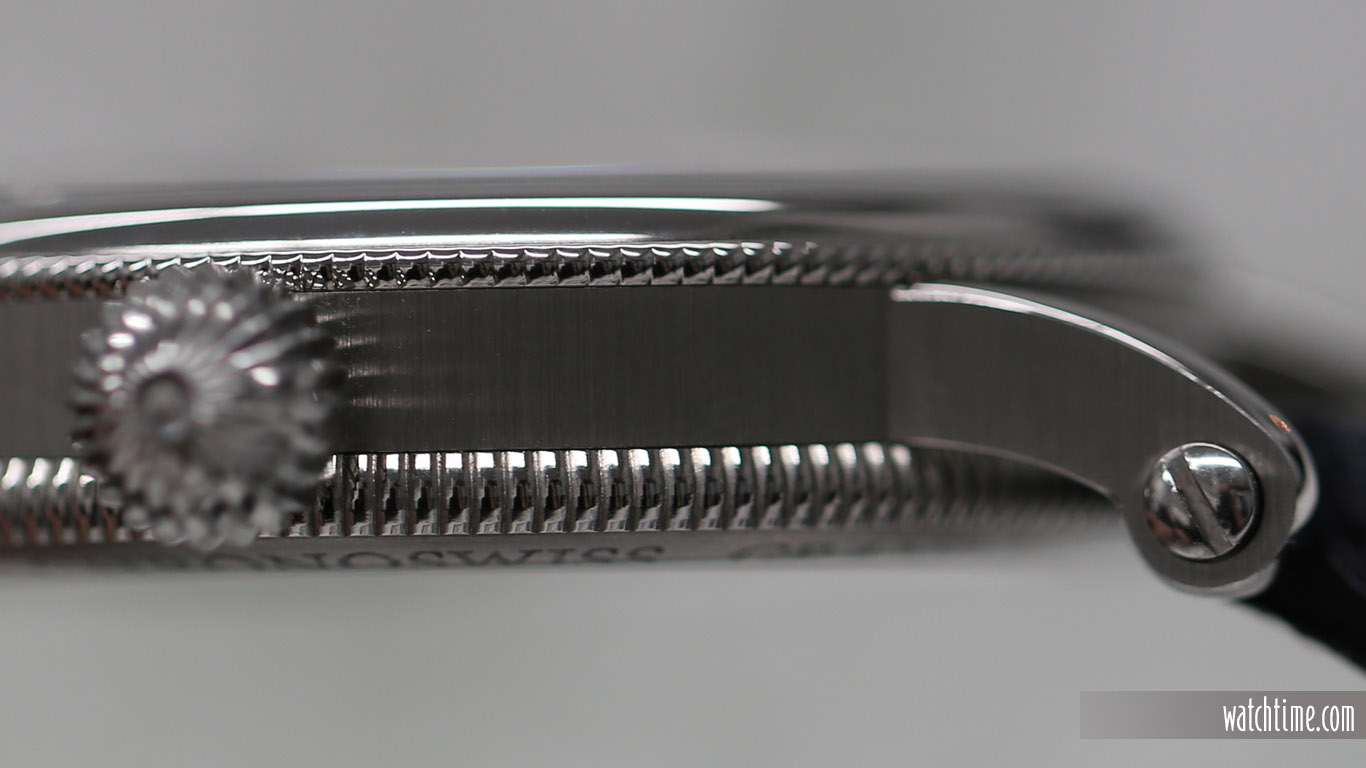
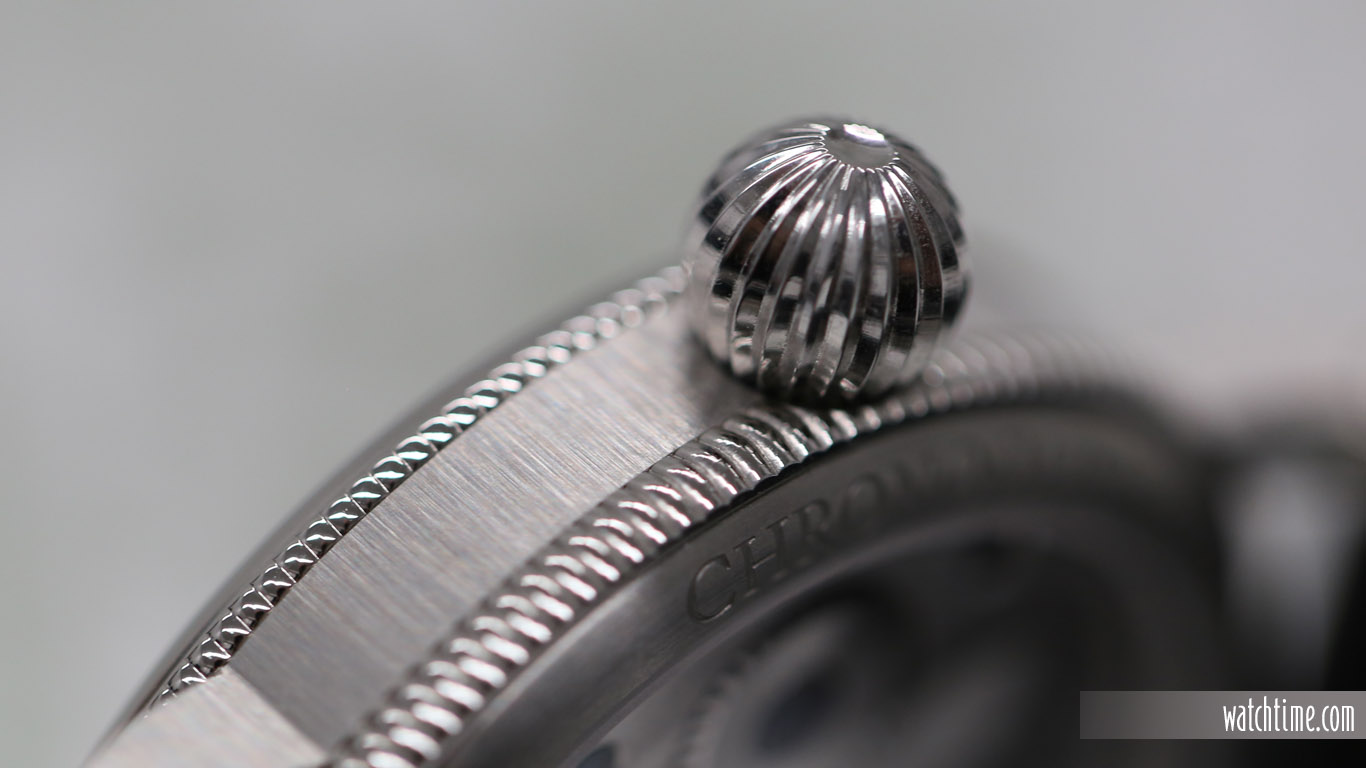
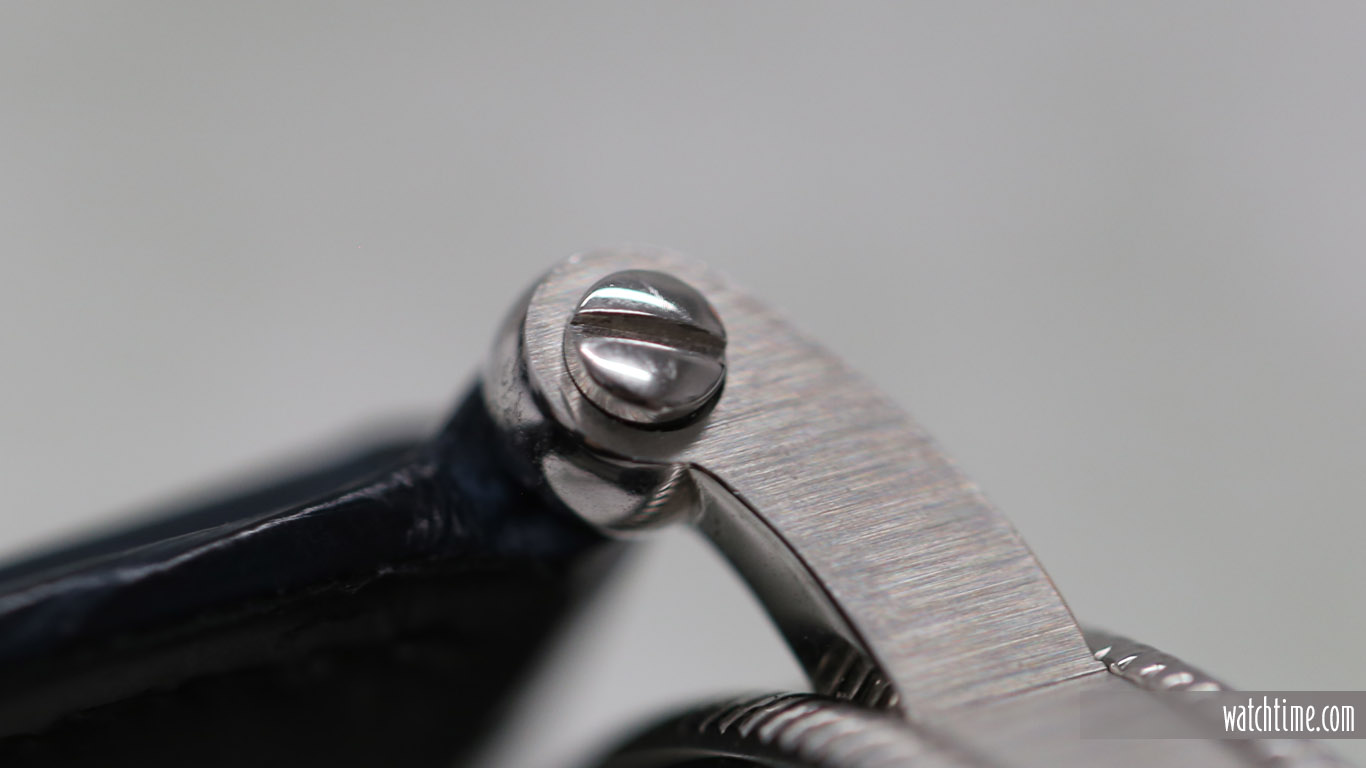
The dial, as the saying goes, contains multitudes, or at least multiple levels. The base is a galvanic blue with an intricate guilloché pattern radiating from the center like ripples in a pond. Above it are two funneled subdials for the hours (at 12 o’clock) and for the running seconds (at 6 o’clock), swept over by a “Poire Stuart”-style central minutes hand — in other words, the classical regulator design. (Regulators, in case you were wondering and/or unaware, derive their name and design from 19th-century clocks with all three time indications — hours, minutes, and seconds — separated, and the minute hand emphasized, which were used as a reference to adjust individual watches.) The hands are diamond-cut and rhodium-plated, with the exception of the tiny seconds subdial hand in red (The red is about the same tone as the blue behind it, so seeing at a glance if the watch is running is frankly not as easy it could and should be.) Another strip of galvanic blue, with the Chronoswiss logo and “Atelier Lucerne” bisects the dial for a symmetrical, balanced look.
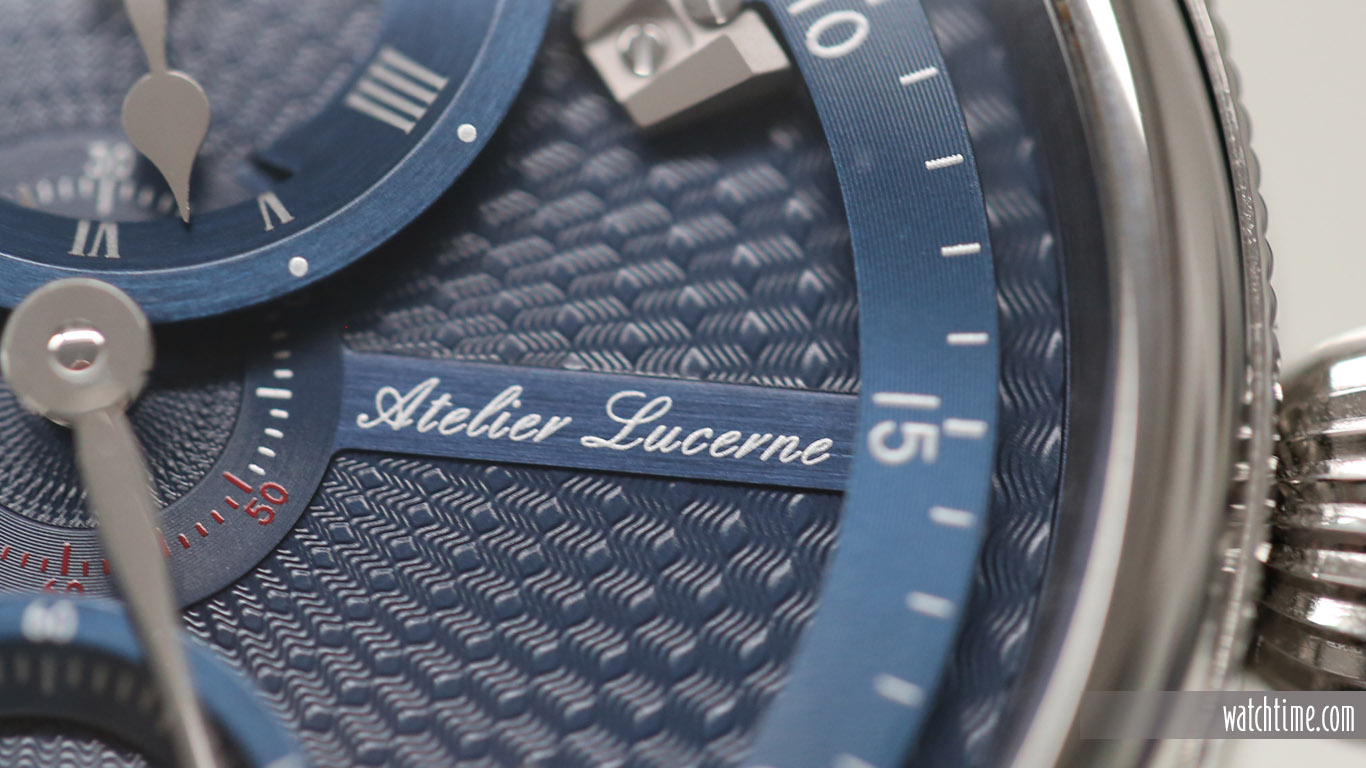
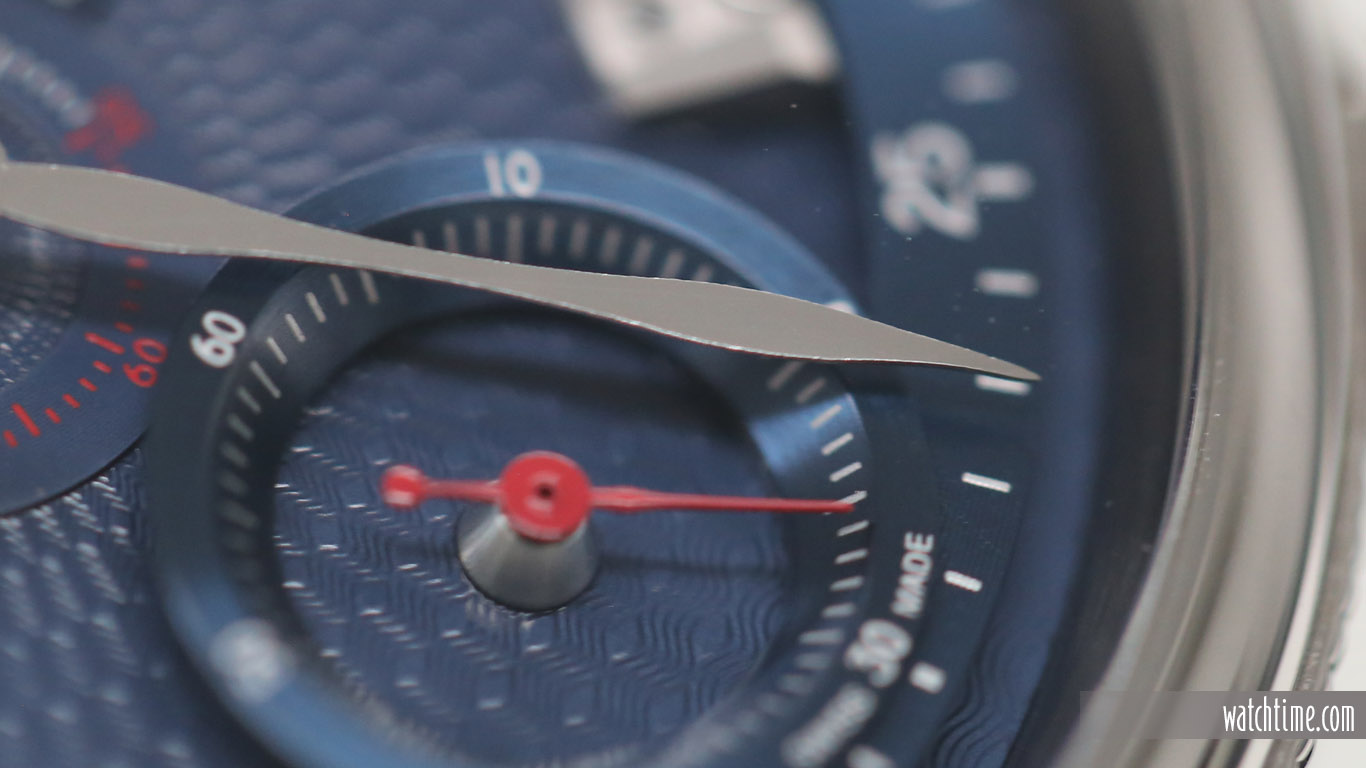
The hour numerals in the 12 o’clock subdial, which is larger than the 6 o’clock seconds subdial, are Roman, while the minute numerals — zero to sixty in five-minute increments subdivided by tick marks — are Arabic. There are also four screwed-in, pedal-shaped metal markers at approximately 2, 4, 8, and 10 o’clock whose function I wasn’t able to discern, so I can only assume they are utilitarian, i.e., holding together elements or layers of the multi-level dial.
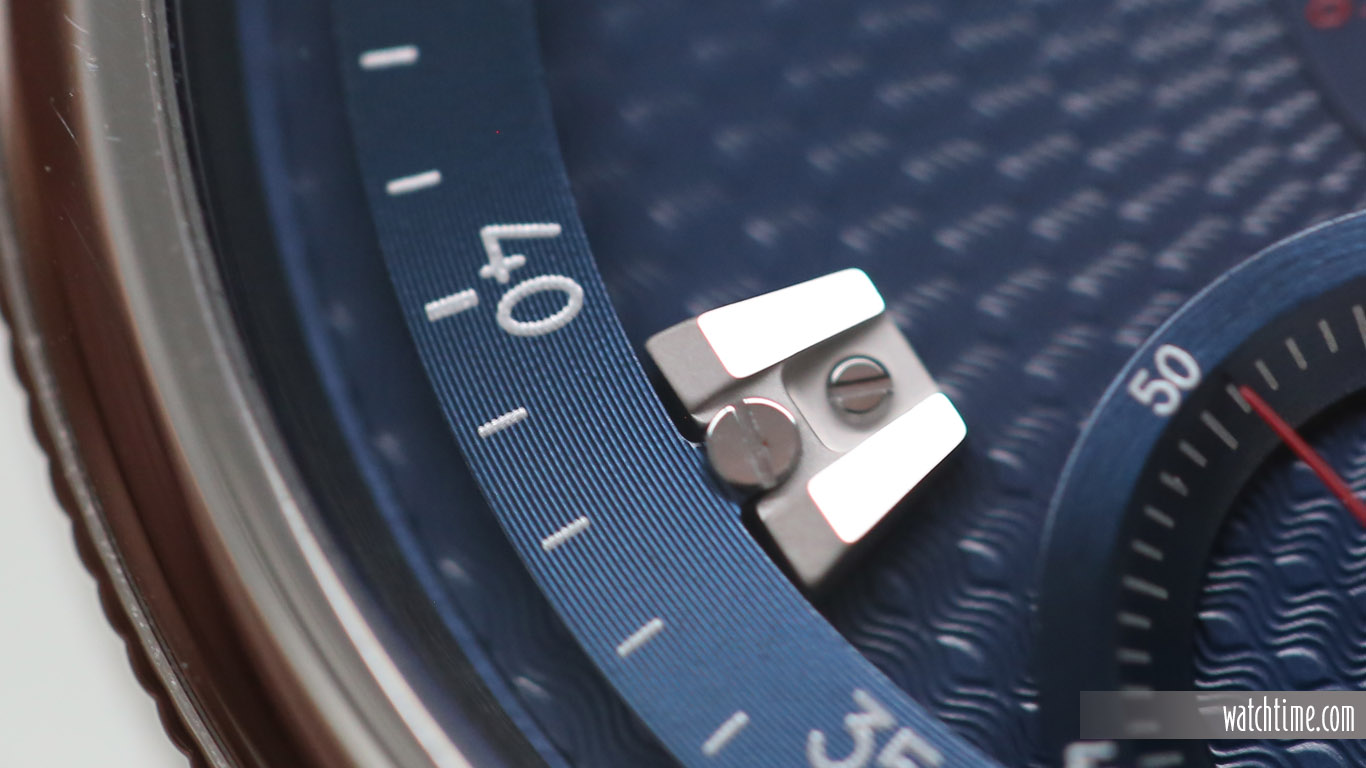
On the rear side of the watch, and on display through a wide sapphire caseback, is the very attractive movement, Chronoswiss Caliber C.678, whose base movement has remained elusive despite a fair amount of googling. It is a manual-winding movement, as is immediately evident upon noticing the lack of rotor, and sports an array of horological eye candy in full view: the big, hypnotically beating balance wheel in the lower right, copious blued screws and rubies (17 of the latter), big bridges adorned with circular côtes de Genève, perlage on the plate below those surrounding the balance, toothed barrels holding the watch’s 38-hour power reserve — which brings up another element I really appreciated about the watch. The movement is apparently equipped with a device that stops the crown from overwinding it. When you’re not sure how much power is left in a manual-winding watch, and you don’t know how many turns of the crown it takes to wind it back to full power, this is quite a nice bonus.
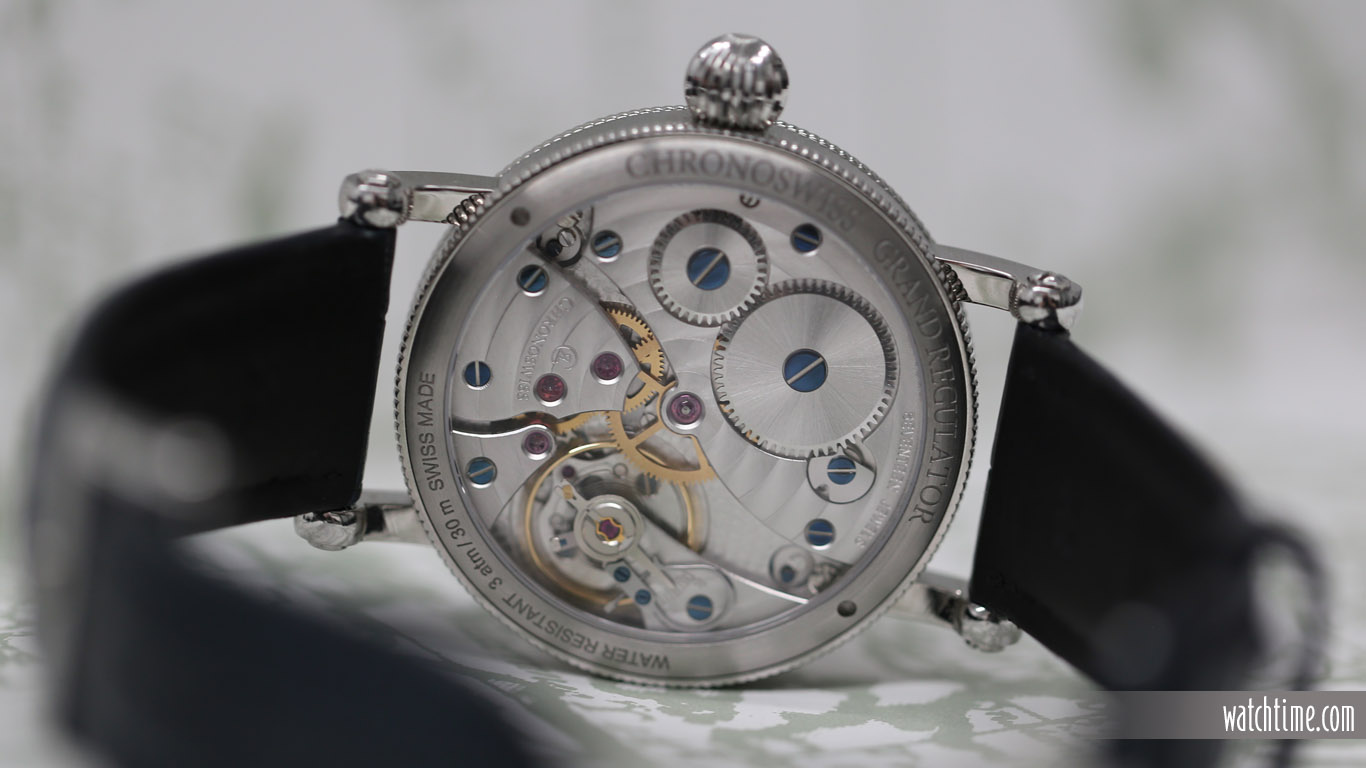
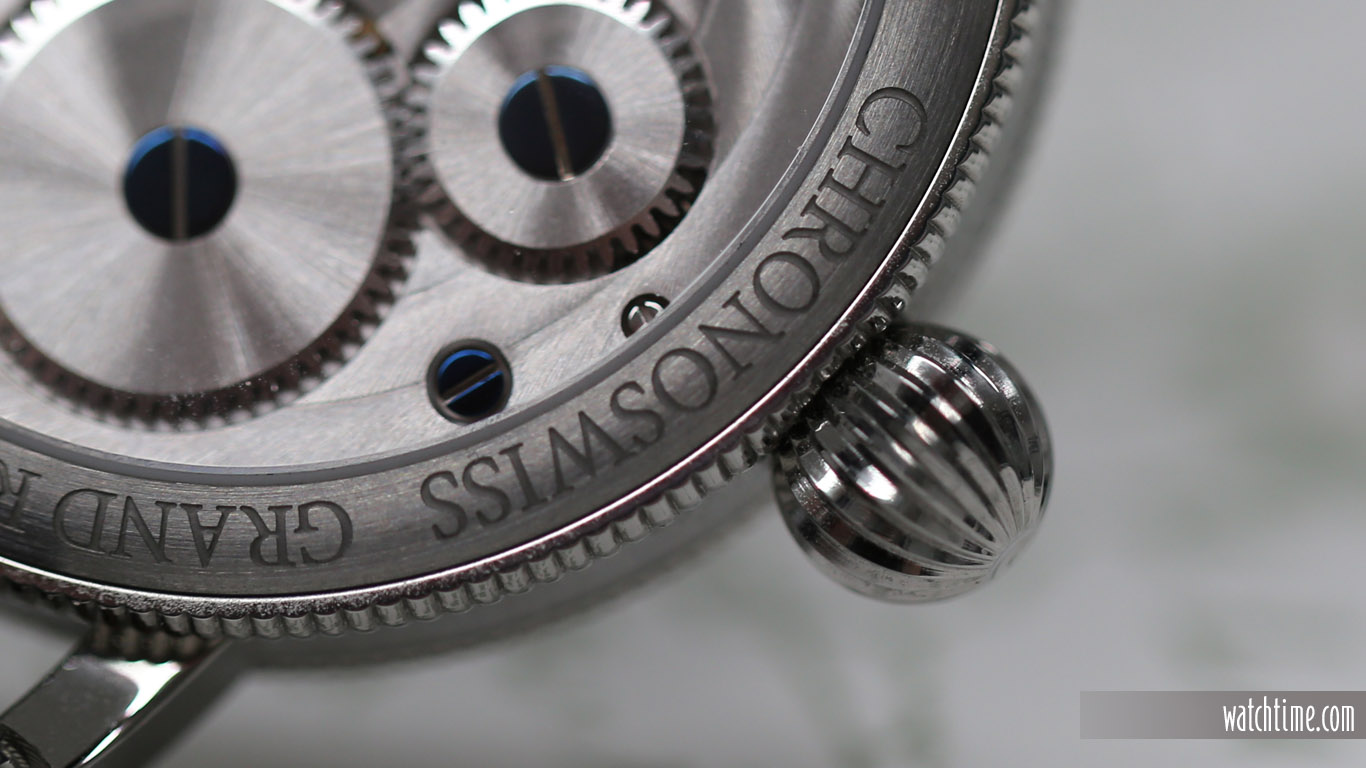
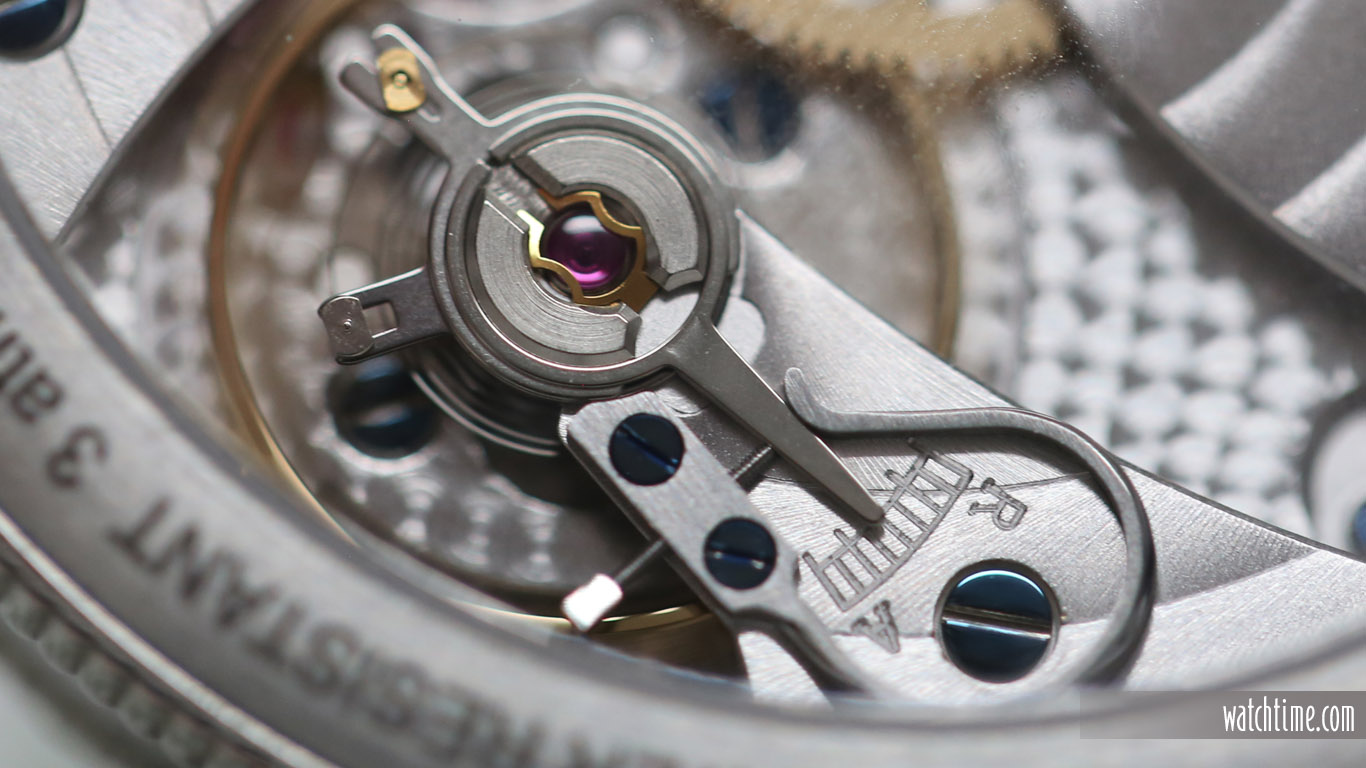
The strap and buckle closure is, without a doubt, the most secure I’ve ever encountered, albeit not the most user-friendly. The little pin on the end of the buckle which fits into the holes of the strap has a very small screw on its tip that must be unscrewed and then screwed back in after you have fitted the pin to the proper hole. Again, very secure when it’s all set, but you are out of luck as far as re-sizing the strap on the fly if, like myself, you are not carrying around a tiny screwdriver at the time. All that aside, the Louisiana alligator leather strap is quite comfy once its fitted, and the blue color scheme harmonizes with the dial as well as you’d expect.
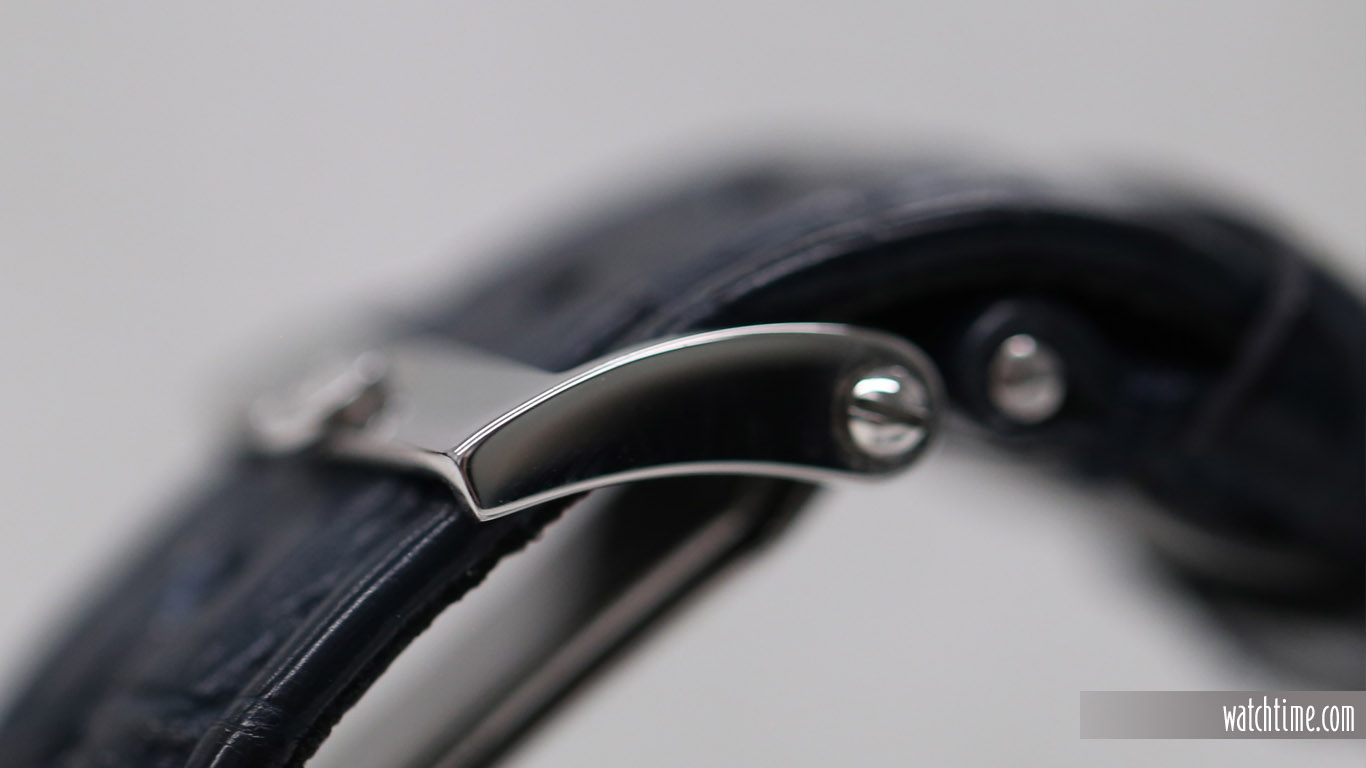
Make no mistake: I love me some regulator dial, and I love me some blue-on-blue design, and I love intricate dials with loads of depth and decorative embellishments. I even love this brand’s distinctively vintage-style touches like the onion crown and coin-edge bezel treatment. I love these all so much that I can live with the watch’s somewhat subpar legibility, especially in low light. The rhodiumed hands somehow don’t contrast quite enough with the background elements to make telling the time easy at a glance. I’m not sure what the solution would’ve been; luminous material on a classical looking timepiece like this would have surely been out of place. White hands and numerals, perhaps? The good news for those who prize utility over beauty more strictly is that Chronoswiss does offer the Sirius Flying Grand Regulator in a variety of styles and color schemes. One is sure to find a model that ticks all the aesthetic boxes.
The Chronoswiss Sirius Flying Grand Regulator with steel case and blue guilloché dial is priced at 7,500 Swiss francs, or approximately $7,700 in the U.S.


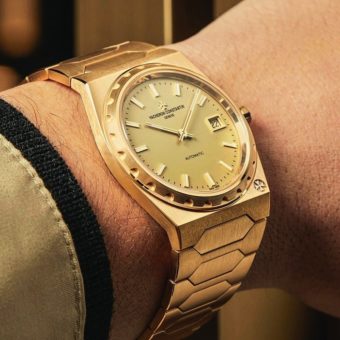

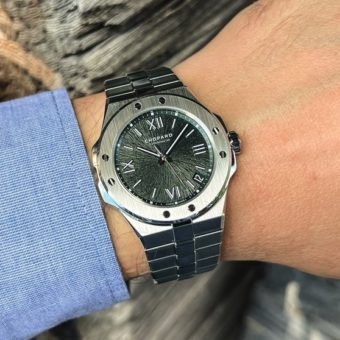


Owning a C122 in yellow gold I wish all the best for Gerd-Rüdiger and his successors…
I remember once upon a time when Chronoswiss made beautiful retrograde watches. The Chronoswiss Sirius Flying Grand Regulator doesn’t work for me.
Shame the attention to detail is a bit lacking. The dial fixing blocks just look odd, screws not aligned, blocks not aligned and why not position as hour markers. Spoils an othwise very nice face
My interest is for limited edition serous flying grand regulator in stainless steel.
Good evening Mark,
You have written: “…, whose base movement has remained elusive despite a fair amount of googling.”
For me the design is very closed to Unitas 6498, no?
Regards.
JMR
Good eye. Internally, our editorial staff is pretty convinced of this as well, but I did not want to specify without verification. Thanks for following WatchTime!